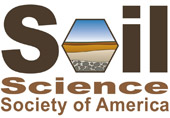Monitoring Soil-Based Ecosystem Services: A Landscape-Scale Approach for Heterogeneous Landscapes.
See more from this Division: OralMonitoring Soil-Based Ecosystem Services: A Landscape-Scale Approach for Heterogeneous Landscapes.
See more from this Session: Assessment and Evaluation of Ecosystem Services 4A
Saturday, March 8, 2014: 2:15 PM
Grand Sheraton, Magnolia
Soils provide a diverse array of valuable ecosystem services (ES) and agroforestry systems are increasingly being promoted to maintain or improve provision of these services. However, appropriate analytical methods and frameworks for monitoring and assessing the impact of tree-based agricultural practices on ES are lacking and it remains particularly difficult to quantify the level and value of soil ES in heterogeneous landscapes such as those dominated by smallholder agriculture. Interest in quantifying ES is especially strong in developing countries, home to some of the most heterogeneous non-urban landscapes on the planet, for both increasing food security and improving livelihoods via payments for ES to smallholder farmers. In order to address these challenges, research efforts were launched in 2012 in the mountainous agricultural region of Chalatenango, El Salvador as a part of a project assessing the benefits of a slash-and-mulch agroforestry system. Comprehensive field sampling for soil carbon (to a depth of 1 meter), pH, P, K, soluble salts, soil texture and infiltration has been integrated with high spatial resolution satellite imagery to quantify soil-related ES at the landscape scale. Here we present baseline results of soil quality indicators and their drivers across the landscape, including contiguous digital soil maps of chemical and physical soil properties. We focus on methodologies used to carry out analysis in an efficient and accurate way with quantifiable uncertainty estimates. At the nexus of emerging technologies in soil science, land change science and geo-spatial modeling, this research seeks to provide results critical to decision-making for a variety of stakeholders, from farmers to policy makers to projects supporting payments for ES, while furthering our understanding of ES dynamics in smallholder landscapes.
See more from this Division: OralSee more from this Session: Assessment and Evaluation of Ecosystem Services 4A
